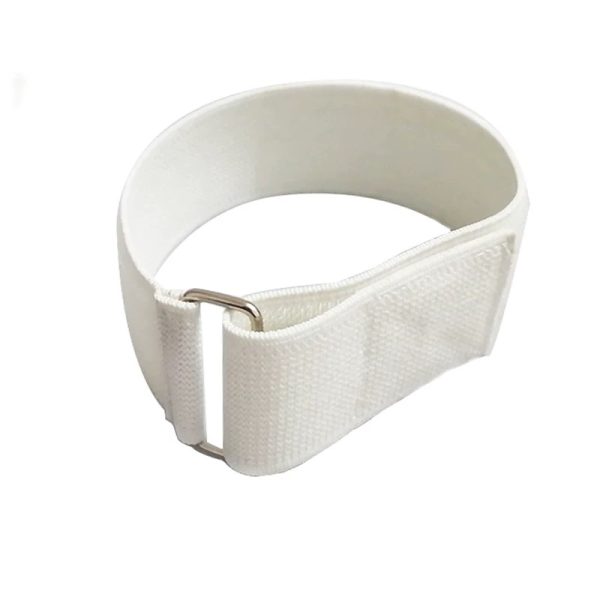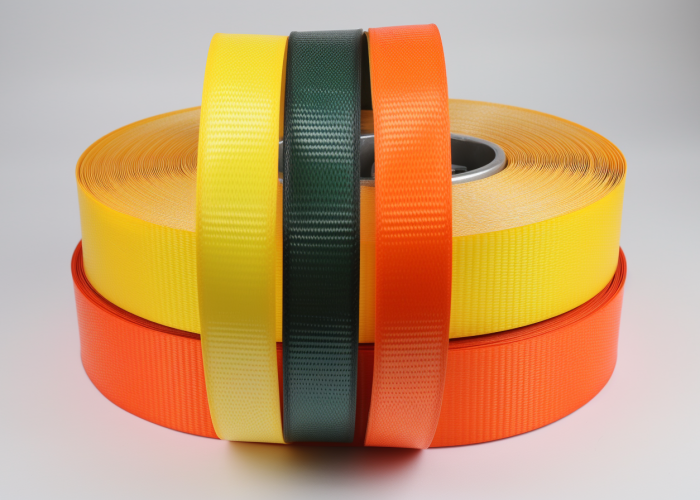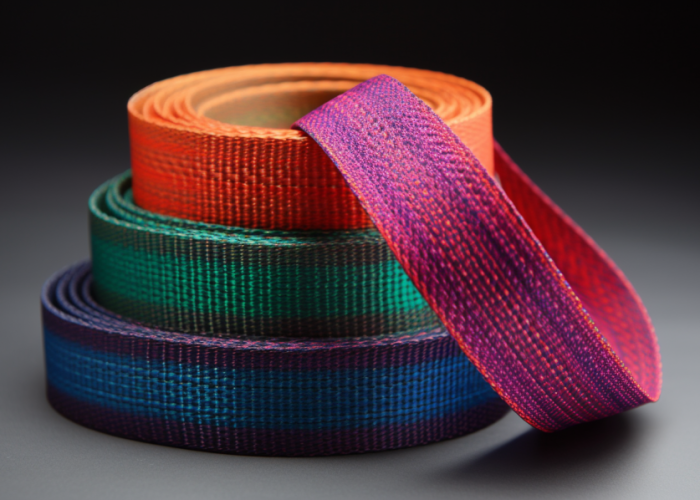Selecting appropriate surface treatments for industrial webbing requires understanding critical compatibility factors that affect performance, safety, and compliance. Manufacturing engineers and product developers must navigate complex chemical interactions, application method limitations, and regulatory requirements when specifying multiple treatments for specialized webbing applications.
Hydrophobic/hydrophilic finishes, PFAS repellents with certain adhesives, and conductive treatments with diagnostic imaging coatings cannot be safely combined in webbing manufacturing. These incompatibilities stem from chemical reactivity, contradictory application environments, and interference with essential performance properties that compromise webbing integrity and functionality.
Explore chemical, application, and regulatory factors for treatment compatibility, with testing methods and expert guidance for alternative webbing solutions.


Webbing manufacturing expert with 15+ years of experience helping product developers build high-performance straps for industrial, medical, and outdoor use.
Chemical incompatibility in surface treatments occurs when compounds used in sequential or overlapping processes react adversely, leading to diminished performance or complete treatment failure. The most common incompatibilities involve hydrophobic/hydrophilic combinations, where water-repelling finishes chemically neutralize water-attracting treatments, PFAS-based water repellency conflicting with certain adhesives, and treatments requiring contradictory pH environments during application.
Key incompatibility factors:
Chemical structure conflicts occur when opposing molecular structures interact, neutralizing effectiveness or generating harmful byproducts. Fluorocarbon repellents (C-F bonds) interfere with silicone treatments (Si-O bonds), reducing effectiveness of both and compromising mechanical properties. This reaction is particularly problematic with traditional 8-carbon PFAS chains.
pH-dependent reactions happen when treatments requiring different activation environments are applied sequentially. Alkaline-activated treatments can denature acid-catalyzed treatments, causing compounds to precipitate and reducing efficacy by 40-60%. Testing shows complete neutralization of hydrophilic properties when fluorocarbon repellents are applied over amino-functional hydrophilic treatments.
Cross-contamination creates unintended chemical reactions between processing baths. Antimicrobial treatments with quaternary ammonium compounds readily bond with anionic surfactants, reducing antimicrobial effectiveness by 30-50%. Specialized rinse cycles help prevent these interactions in complex treatment sequences.
Industry case study: When flame-retardant treatments and water-repellent finishes are applied together, interactions between phosphorus-based flame retardants and fluorochemical water repellents can reduce performance of both treatments and cause material discoloration.
Accelerated compatibility testing helps eliminate costly development iterations. Evaluation through controlled testing and analytical methods can reduce development timelines by 4-6 weeks, validating treatment compatibility during the concept phase rather than discovering conflicts during production.
Application method incompatibilities occur when sequential treatments require contradictory processing environments that compromise previously applied finishes. Common conflicts include wet vs. dry application requirements, temperature-sensitive treatments exposed to high heat in subsequent processes, and treatments requiring specific curing conditions that damage or degrade other finishes.
Key application restrictions:
Wet/dry process conflicts arise when treatments requiring completely dry substrates follow water-based applications. Water-based antimicrobial treatments requiring 24-48 hour cure times become compromised when followed by solvent-based repellents that must be applied to completely dry substrates. This sequence disrupts the binding process of the antimicrobial agents, reducing effectiveness by 25-35% compared to properly sequenced applications.
Temperature sensitivity creates significant limitations when heat-sensitive treatments undergo high-temperature processing for subsequent finishes. UV-cured treatments that degrade above 140°C lose effectiveness when followed by heat-set repellents requiring 180-200°C curing temperatures. Testing demonstrates up to 70% degradation of UV-active compounds when exposed to these elevated temperatures, creating unpredictable performance characteristics.
Mechanical application conflicts occur when treatments requiring gentle handling follow processes involving high-tension or abrasive application methods. Delicate topical treatments applied to medical-grade webbing can experience physical disruption when processed through high-tension stenters for subsequent treatments, creating uneven coverage and compromised performance in critical applications.
Industry case study: When attempting to apply conductive coatings after water-repellent treatments, the surface tension created by the repellent prevents uniform adhesion of the conductive layer, resulting in inconsistent electrical properties and potential safety issues in anti-static applications.
Modified application sequences and specialized process isolation techniques can overcome many traditional limitations. Testing different application orders, employing zone-specific treatment methods, and utilizing targeted mask-and-treat technologies allow otherwise incompatible treatments to coexist successfully on the same substrate, opening new possibilities for multi-functional webbing.

Coating and electrical property incompatibilities arise when treatments designed for specific performance characteristics interfere with conductive pathways or create insulating barriers that compromise essential functions. The most significant conflicts involve conductive treatments with insulating coatings, diagnostic imaging compatibility with metallic elements, and signal interference between multiple electromagnetic-sensitive treatments.
Key electrical incompatibilities:
Conductivity conflicts occur when treatments create insulating barriers over intentionally conductive elements. Anti-static carbon fiber treatments lose effectiveness when overcoated with hydrophobic polymers, creating a non-conductive layer that prevents proper charge dissipation. Testing shows resistance increases from 10⁶-10⁹ ohms (within IEC 61340 standard range) to beyond 10¹² ohms when certain water-repellent treatments are applied over conductive elements, exceeding static dissipation thresholds.
Diagnostic imaging compatibility presents critical challenges in medical applications. Treatments containing metal particles or high-density elements interfere with MRI, X-ray, and ultrasound imaging. Barium-containing flame retardants can create artifacts in diagnostic imaging that obscure crucial details, potentially compromising patient safety during imaging procedures.
Electromagnetic interference occurs when multiple signal-interactive treatments create competing effects. Webbing incorporating both EMI shielding and RFID compatibility elements can experience cross-treatment interference, reducing RFID read ranges by 40-60% while simultaneously compromising shielding effectiveness against unwanted frequencies.
Industry case study: In aerospace applications, webbing requiring both flame retardancy and anti-static properties can experience significant performance degradation when certain metallic flame-retardant particles interfere with the carbon pathways necessary for static dissipation, creating potential safety risks in fuel-proximity applications.
Specialized multi-functional treatments developed specifically for compatibility offer solutions to many electrical property conflicts. Single-step treatments providing multiple performance characteristics eliminate sequential application issues while maintaining full functionality across both properties, creating new possibilities for technically demanding applications.
When preferred surface treatments prove incompatible, alternative approaches including modified application sequences, isolation techniques, multi-functional treatments, and alternative chemistry systems can deliver equivalent performance without conflicts. These solutions require understanding the specific performance requirements rather than focusing solely on traditional treatment specifications.
Key alternative approaches:
Modified application sequences can overcome many traditional incompatibilities. Reversing application order, adjusting concentration ratios, or introducing intermediate curing steps creates compatible treatment combinations from otherwise conflicting processes. Testing shows that applying flame retardants before water repellents rather than after can maintain 85-95% effectiveness of both treatments compared to 40-60% effectiveness when applied in the problematic sequence.
Barrier layer technology creates isolation between potentially reactive treatments. Ultra-thin (0.5-2.0 micron) intermediate coatings prevent chemical interaction between active treatment layers while maintaining flexibility and breathability. These microscopic barriers allow sequential application of treatments that would otherwise neutralize each other, expanding multi-functional possibilities.
Multi-functional single treatments eliminate sequential application entirely. Advanced formulations combining water repellency with antimicrobial properties or flame retardancy with anti-static characteristics in single-step applications avoid compatibility issues while reducing processing time and complexity. These hybrid treatments typically achieve 90-95% of the performance of individual treatments without conflict risks, though they often come with higher material costs and shorter shelf life than individual treatments.
Industry case study: When a medical device manufacturer required both antimicrobial and lubricious properties that proved chemically incompatible, a zone-specific application approach allowed both treatments to function effectively on different portions of the webbing, meeting all performance requirements without compromise.
Performance-focused substitution approaches the compatibility challenge by redefining requirements based on performance needs rather than specific chemistries. By identifying the functional requirements rather than specific treatment chemistries, alternative approaches can often deliver equivalent or superior performance through entirely different mechanisms that avoid compatibility conflicts altogether.

Regulatory frameworks restrict combining certain surface treatments containing substances classified as persistent, bioaccumulative, toxic (PBT), carcinogenic, mutagenic, or reproductive toxins (CMR). These restrictions prevent combining treatments that individually comply with regulations but together create hazardous substances or exceed cumulative exposure limits.
Key regulatory factors:
REACH regulations in the EU and similar frameworks worldwide establish strict limits on hazardous substances in consumer and industrial products. The combination of certain treatments can create regulated substances through chemical interaction or exceed cumulative limits for restricted chemicals. Legacy PFAS treatments (C8 chemistries like PFOA/PFOS, now largely phased out globally) combined with certain antimicrobials may result in reaction products listed on SVHC lists, creating regulatory non-compliance despite individual treatment compliance. Note that newer short-chain PFAS are also facing restrictions in the EU and upcoming US EPA rules in 2025.
Cumulative exposure thresholds create combination limitations even when individual treatments comply with regulations. Multiple treatments containing small amounts of regulated substances may collectively exceed maximum allowable concentrations. Heavy metal-containing treatments may individually test below regulatory thresholds but exceed limits when combined on the same substrate.
Medical device regulations impose particularly stringent requirements on treatment combinations. ISO 10993 biocompatibility testing requires evaluation of final products with all treatments applied, not just individual components. Treatment combinations must pass cytotoxicity, sensitization, and irritation testing as an integrated system to achieve regulatory clearance.
Industry case study: A consumer product manufacturer faced regulatory challenges when flame retardant and water-repellent treatments, both independently compliant with regulations, formed a reaction product during processing that exceeded Proposition 65 thresholds, requiring extensive reformulation to maintain both properties while ensuring regulatory compliance.
Pre-compliance testing for treatment combinations identifies potential regulatory issues before final production. Chemical analysis of treated webbing including both individual treatments and potential reaction products allows manufacturers to verify regulatory compliance throughout the supply chain, preventing costly recalls or market restrictions due to unforeseen chemical interactions.
Biocompatibility requirements restrict combining surface treatments that individually pass ISO 10993 standards but together create cytotoxic, sensitizing, or irritating effects through chemical interaction or migration. Medical and skin-contact applications must evaluate complete treatment systems rather than individual components to ensure safety.
Key biocompatibility factors:
Cytotoxicity testing reveals that treatment combinations can create toxic effects absent in individual treatments. ISO 10993-5 testing shows certain flame retardants combined with antimicrobial treatments can reduce cell viability below 70% threshold for biocompatibility, despite each treatment independently testing as non-cytotoxic. These interactions typically occur through formation of reactive compounds or enhanced migration of potentially toxic components.
Sensitization potential increases with certain treatment combinations. Multiple treatments containing small amounts of potential sensitizers may collectively exceed thresholds for allergic reactions. Quaternary ammonium compounds in antimicrobial treatments combined with certain dyes can create enhanced sensitization potential not present in either treatment independently.
Leachable compounds present significant challenges when treatments interact in aqueous environments. Worst-case extractables/leachables testing per ISO 10993-12 and -18 demonstrates that hydrophilic treatments can enhance migration of otherwise stable hydrophobic components from secondary treatments, increasing bioavailability of potentially harmful substances and exceeding safety thresholds established for individual treatments.
Industry case study: A medical device using webbing with both antimicrobial and enhanced grip treatments passed individual biocompatibility tests but failed when combined due to unexpected interaction between quaternary ammonium compounds and tackifier components, requiring complete reformulation of the grip enhancement system.
Pre-manufacturing biological evaluation identifies potential incompatibilities before significant investment. Full ISO 10993 testing of treatment combinations on representative samples allows manufacturers to verify biocompatibility of the complete system rather than discovering incompatibilities during final product qualification, reducing development risks and regulatory delays.

Environmental and occupational safety regulations limit combining surface treatments that together exceed VOC emission thresholds, create hazardous waste classification changes, or introduce workplace exposure risks exceeding OSHA PELs. These factors restrict combinations that individually comply with standards but collectively create regulatory concerns.
Key environmental and safety factors:
VOC emissions from combined treatments may exceed regulatory thresholds even when individual treatments comply with standards. Depending on local jurisdiction, regulations establish strict limits on volatile organic compound emissions that can be exceeded when multiple solvent-based treatments are applied sequentially. Testing shows that combined treatments can emit 30-50% higher VOC levels than the sum of individual treatment emissions due to solvent interactions and enhanced evaporation rates.
Hazardous waste classification can change when treatments interact during disposal. Non-hazardous treatments may form regulated compounds when combined, shifting waste classification from general to regulated categories. This requires significantly different handling, documentation, and disposal procedures, increasing compliance complexity and costs throughout the product lifecycle.
Workplace exposure concerns arise when treatments create synergistic effects. OSHA Permissible Exposure Limits (PELs) may be exceeded when workers are exposed to multiple treatment chemicals with similar biological effects, even when individual exposure levels comply with standards. Combined respiratory irritants present particular concerns, requiring enhanced ventilation and personal protective equipment.
Industry case study: A manufacturer applying both solvent-based water repellents and UV-protective treatments exceeded air permit thresholds due to combined VOC emissions, despite each process individually falling below regulatory reporting requirements, necessitating significant process modifications and emissions control investments.
Proactive emissions and exposure testing identifies potential compliance issues before implementation. Comprehensive analysis of combined treatment processes including VOC emissions, waste characterization, and workplace exposure monitoring allows manufacturers to design compliant processes that maintain both environmental standards and worker safety while delivering required performance characteristics.

Understanding surface treatment incompatibilities is essential for developing high-performance webbing products. Chemical reactions, application conflicts, and regulatory restrictions all impact treatment selection and sequencing. By identifying potential compatibility issues early in development, manufacturers can implement appropriate solutions through modified sequences, barrier technologies, or multi-functional treatments. Contact us to explore manufacturing solutions tailored to your product requirements.
Hydrophobic and hydrophilic treatments are fundamentally incompatible due to opposing molecular structures. These treatments chemically neutralize each other, with fluorocarbon water repellents directly counteracting amino-functional hydrophilic finishes. Similarly, certain antimicrobials containing quaternary ammonium compounds cannot be combined with anionic surfactant-based treatments due to immediate chemical neutralization.
FTIR spectroscopy, performance testing, and accelerated aging protocols verify treatment compatibility. FTIR identifies chemical interactions between treatments by detecting molecular changes after application. Performance testing measures the effectiveness of each treatment in the combined system. Accelerated aging evaluates long-term stability of treatment combinations under environmental stress conditions.
Combined treatments must collectively comply with VOC emissions limits, hazardous waste regulations, and workplace exposure standards. Multiple treatments may exceed regulatory thresholds even when individually compliant. Manufacturing facilities need comprehensive emissions testing, waste characterization, and workplace monitoring for treatment combinations to verify regulatory compliance.
Medical-grade webbing must comply with ISO 10993 biocompatibility standards for the complete treated system, not just individual components. Even when treatments independently pass cytotoxicity, sensitization, and irritation testing, their combination may create new compounds that fail these tests. Full biological evaluation of the final treated webbing is required before medical device integration.
Safety-critical applications require comprehensive chemical characterization, treatment interaction validation, and batch-specific traceability documentation. This includes raw material certificates, process parameters for each treatment step, compatibility testing results, and complete chemical composition including potential reaction products. ISO 9001/13485-compliant traceability systems must link all components throughout the manufacturing process.
Barrier layer technology, modified application sequences, and multi-functional treatments effectively address incompatibilities. Ultra-thin barrier coatings (0.5-2.0 microns) prevent chemical interaction between treatments. Optimized application sequences minimize conflicts, and specially formulated multi-functional treatments deliver multiple properties in a single application, eliminating sequential treatment concerns.